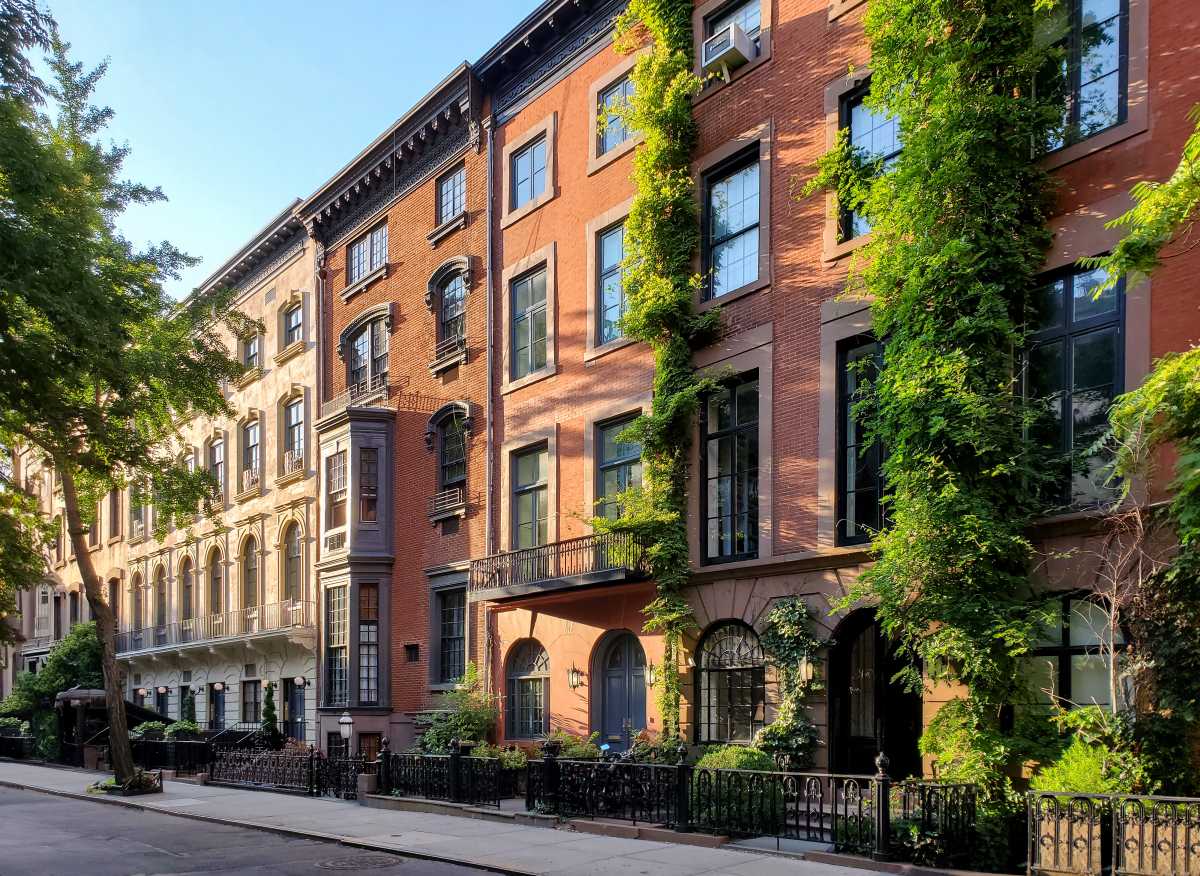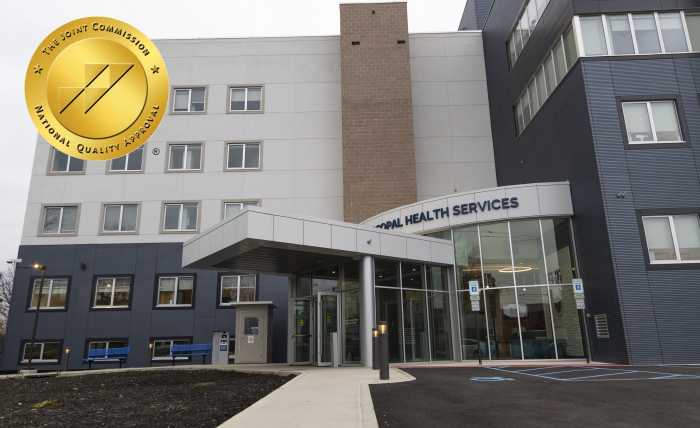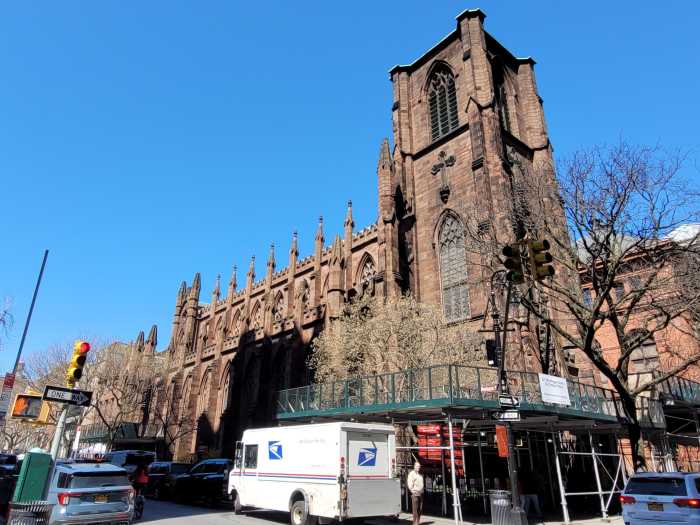BY ANDY HUMM | The High Line is nothing if not a new perspective on a land we thought we knew. Its third-story railroad bed rises from the once-meaner parts of Chelsea and the Village and exposes our radically changing neighborhoods in unexpected ways hidden from us at street level (or even from upper-floor apartment windows) while providing an unprecedented view of the rest of Manhattan, the Hudson and the United States proper across the river.
Now, this unique park that lets us look at the city anew is getting a new look from residents and community leaders. While most profess love and appreciation for the High Line, some are starting to voice reservations about its crowds, its relationship to skyrocketing residential and commercial real estate prices, its elite status as a city park financed almost entirely privately, and the fairness of its success at a time when many other parks — including the new Hudson River Park, not to mention anything in Bushwick — are struggling for funding.
Joshua David, the co-founder of Friends of the High Line with Robert Hammond (and a longtime Chelsea resident), said that the users of the park are roughly half tourists and half from Greater New York — with half of the latter group from the surrounding neighborhoods. Before the elevated park’s first section, between Gansevoort and W. 20th Sts., opened in June 2009, David said, “We anticipated 300,000 visitors. We’re up to 3.7 million a year.” That’s more than visit the Museum of Modern Art annually. It is a public city park, with the Friends of the High Line providing 90 percent of the operating costs.
It is now one of the city’s top tourist attractions. In that vein, a Chelsea resident recently posted an anonymous sign. The note reminded visitors that this is a place where people live, not one big exhibit. The writer ended on a xenophobic note, telling “those who don’t speak English” to have someone translate for them.
Joan Tramontano has lived in London Terrace (West 23rd between Ninth and Tenth) since 1968 and loves the High Line. She remembers David setting up a small table on the street to educate the community about the need to save the High Line.
“I didn’t believe the city would permit it,” she recalled. “I supported it and still do.”
She also remembers when there was virtually no foot traffic through West Chelsea in the late 1960s.
“There were lots of homeless people on the street,” she said. “When I lived on the 24th St. side of the building, we entered from 23rd St. People wouldn’t walk on the side street at night. There was no place to eat in the neighborhood. All the townhouses on the south side of 23rd across from London Terrace were boarded up. You could get one for $100,000 and it had to be renovated.”
Now, Tramontano said, “Chelsea is the most expensive neighborhood in the city. When I moved here in ’68, nobody I knew had heard of Chelsea.”
Bill Hayes of the New York Times recently wrote of his experience ascending to the High Line: “What I had not anticipated was how crowded it would be, like being stuck on a moving sidewalk at an airport.” He tempered that criticism with: “But the night was too nice to begrudge anyone anything, particularly a chance to experience beauty. So I imagined I was a tourist, too, headed for a distant gate to board a plane to a place I had never been.”
David said that local residents including himself are coming to realize that if they don’t like crowds on the High Line, the park is to be avoided on weekends between 12 noon and 5 p.m.
“All other hours are pleasurable,” he said. “People adapt.”
The High Line is surrounded by an explosion of new luxury residential buildings. The Caledonia and two others yet unbuilt — all bisected by the park — are obliged to kick in substantial sums to the city’s High Line Improvement Fund under the deal that rezoned wide swaths of the area from manufacturing to residential. Other developers voluntarily contribute to the Friends of the High Line, which runs the park for the city.
It’s an old story, but the influx of wealthy people has pushed up real estate values — a boon to those who already own (since their apartments increase in value) and a challenge to anyone who wants to buy or rent in Chelsea. It has also vastly increased commercial rents by pushing out small neighborhood service stores and replacing them with upscale boutiques and restaurants.
The High Line operates on a budget of $7 million a year, David said, a chunk of that going to the development of the unfinished northern and final section. The High Line’s financing system — contributions by developers and donations very large and small through membership in the Friends of the High Line — raises the question of whether it is fair for desirable neighborhoods to get upscale parks when poorer ones do not. Indeed, government funding for the Hudson River Park has been slashed from $20 million to $6 million.
This, too, is not a new controversy. Fifth Ave. and Central Park West residents started the Central Park Conservancy to rehabilitate the city’s crown jewel with private money and did so, imposing a lot of new rules in the process. Is it fair?
“If New Yorkers wanted to increase taxes to reduce the need for private philanthropy, that would be great — but that’s not reality,” David said. “Parks get cut first when city budgets are cut.”
David said the Friends have been able to attract big donations “because donors see the High Line as something optimistic and promising about New York. It gives them a new perspective on the city and positions New York as a leader.”
In fact, Chicago, Detroit and Jersey City are looking at developing parks along this concept, and the Lower East Side is even looking at developing an underground “Low Line” park.
“The High Line is not just an expression of affluence,” David said. “It’s about a group of community members who rallied around it,” and it is those community roots, he said, that have made it so successful. David contrasted this with a similar, government-built, elevated-rail park in Paris — the Promenade Plantée — which, he noted, is “appreciated, but not beloved.”
George Boras, another longtime London Terrace resident, said, “What does the High Line do for us? There are no supermarkets opening, no shoe repair stores, nothing that would enhance the neighborhood for those who live here with basic services. But there’s nothing we can do about it. It’s the wave of the future.”
David said that the gentrification of West Chelsea didn’t begin with the High Line. Former Mayor Rudy Giuliani opposed saving the High Line but was accelerating the process of rezoning the area for residential development. In the end, developers have benefited greatly in terms of the values of their properties because of the light and style provided by the High Line. As outgoing Parks Commissioner Adrian Benepe, who has presided over the High Line’s development with the enthusiastic support of Mayor Bloomberg, said, “It is not just a park. It is a work of art.”
Brad Hoylman, who worked with the park’s founders on developing the High Line as chairperson of the Community Board 2, talked about the park’s “growing pains.”
“I’ve supported it for years,” Hoylman said. “I met Robert and Joshua when they hatched the idea at a community board meeting. I don’t think anyone thought it would become the big attraction that it has or have such an extraordinary effect on real estate values.”
Hoylman, now a candidate for Tom Duane’s state Senate seat, said, “Here’s the deal. On the upside, the High Line is preserved. The downside is that it is changing the neighborhood. But it is important that we keep it in context. The High Line is a great asset. The more we can get the local community involved, the better. The High Line is undertaking a lot of outreach and education programs through the Hudson Guild — arts programs, horticulture programs — involving local residents. We should think of it as a community asset. Local organizations should be able to access it for benefits. It’s not beyond solving. We need to find a way to make the community feel more integrated with it.”
The Friends of the High Line has a whole Department of Programs, Education and Community Engagement headed by Danya Sherman (who did similar work for the Central Park Conservancy). On a recent late spring evening, she was hosting a lively step-dancing competition of mostly African-American girls from city high schools on the High Line’s walkway under The Standard Hotel and attracting a diverse crowd of spectators. In addition to scheduling public entertainments, the High Line runs education programs with local schools and a lecture series for all. They also have started a Youth Corps for interns, some of whom have gone on to jobs with the Friends of the High Line.
“Our focal point is running a park that serves its community first and foremost,” David said, “and New York City as a whole. The High Line is not going to be a place for basketball or barbeques or dogs — and those were hard decisions.”
Hoylman, like Duane, has expressed dismay that while the High Line attracts great philanthropic support, the waterfront Hudson River Park that they worked long and hard for “is not getting its share,” with proposals on the table to turn more of it over for commercial purposes in order to subsidize it.
Andrew Berman, executive director of the Greenwich Village Society for Historic Preservation and a likely candidate for Christine Quinn’s Council seat next year, is also a fan of the High Line.
“I love it. I utilize it frequently. I was an early supporter,” he said. “My organization got part of it listed on the National Register of Historic Places,” saving it from demolition.
“With its success,” Berman noted, “come big issues, such as an incredible number of tourists who come through West Chelsea, a formerly very quiet, lightly trafficked neighborhood. So it is having some undesirable impacts and wonderful impacts as a recreational space where you get a very different perspective.”
This public amenity is what Berman wanted. But then there is the development aspect.
“What we also got was the upzoning of an entire neighborhood to create thousands of units of luxury housing,” he said. “The mayor and Deputy Mayor Dan Doctoroff saw the High Line as a way of leveraging that. It was a high price to pay,” he said, noting that the city didn’t seem to care about the ancillary effects on traffic, schools and city services. The M.O. as Berman put it was: “Just build, build, build! The rich that move in can pay for whatever they need.”
The latest conflict between the community and the High Line, of course, is the bid of Jamestown Properties to win the rezoning necessary to build hotel and commercial space above the Chelsea Market. Despite a requirement for Jamestown to kick in as much as $19 million for the High Line, Chelsea Market’s vertical expansion has been an ongoing subject of contentious debate by the public and Community Board 4 members. On May 31, capping more than a year of discussion on the matter, the full board of C.B. 4 reached a “No, Unless” verdict that would support the Jamestown project if certain design changes were made, and certain community “gets” (such as funding for affordable housing) were added to the current proposal.
In the summer of 2012, the High Line continues to be hot, attracting a steady flow of visitors. But it might not always be so.
Douglas Jennings, a 24-year-old student, said, “I was on a New York dating Web site and, for a while, everyone trying to connect with you would text, ‘Let’s meet for coffee and walk on the High Line,’” the way such seekers used to express the desire for long walks on the beach. “Now,” Jennings said with a chuckle, “the tendency is for people to say, ‘How about doing something that doesn’t involve the High Line?’ ”
But David remains most pleased that he and Hammond have brought something into existence “good enough to make people visit our neighborhood. The vast majority of people are extremely positive about it,” he said. “They go up and have a transformational experience. People are passionate about it.”





































